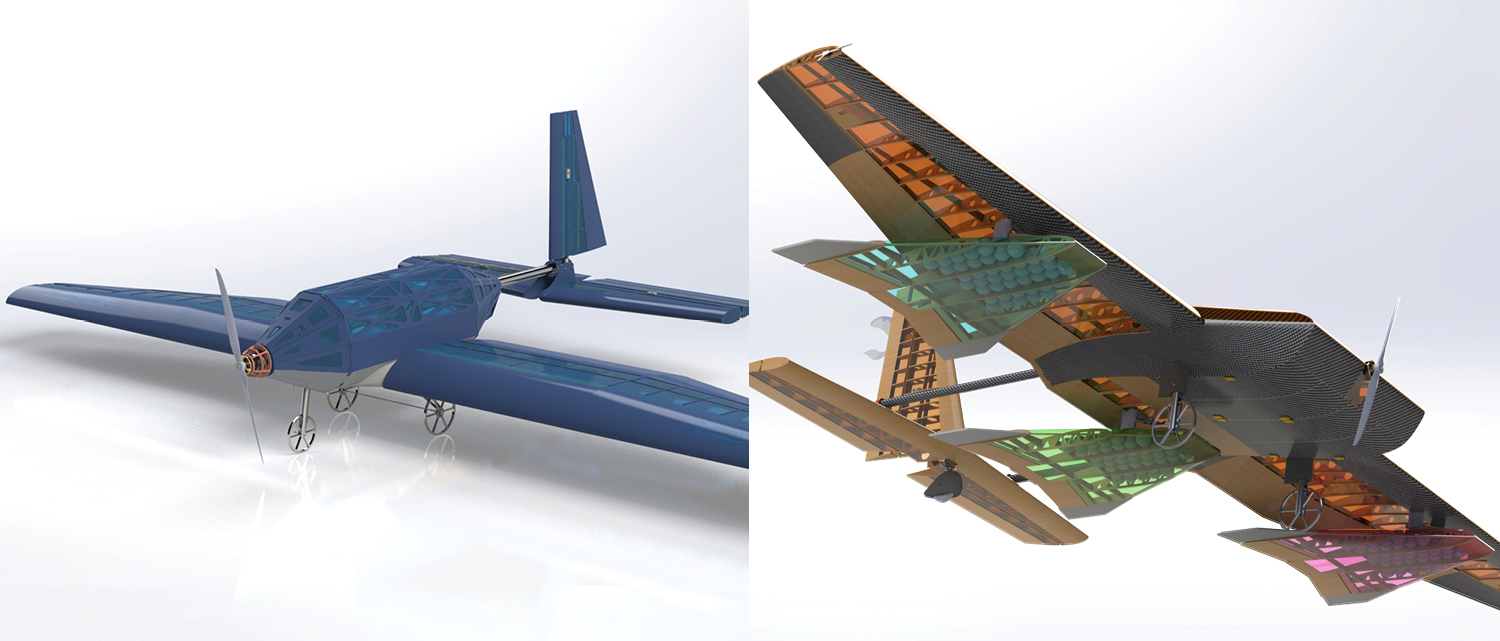
Render of Wailord (left), Mantine and Remoraids (right)
Amid a challenging design year affected by pandemic restrictions, globally displaced members, and another virtual academic session, UBC AeroDesign has once again demonstrated its resiliency and technical aptitude at the 2021 SAE Aero Design Knowledge competition held earlier this March. For competition, the team designed two aircraft which were submitted through technical design reports and presentations.
UBC AeroDesign received the following results:
- Regular Class: 1st place design, 5th place presentation
- Advanced Class: 9th place design, 2nd place presentation
Led by team captain and Mechanical Engineering undergraduate Phoebe Cheung, the over fifty member team pursued two unique designs:
Wailord, the 2021 Regular Class aircraft, featured a 120-inch span low-wing configuration and was subjected to a 100-foot runway limitation and 1000 watt power restriction. The goal was to minimize empty aircraft weight while maximizing payload capacity. Wailord was designed to carry two soccer balls and 18.3 lbs. of static payload.
Mantine, the 2021 Advanced Class aircraft, incorporated a blended-wing body and was subjected to a lower power restriction of 750 watts, but was permitted to use fibre-reinforced composite material. The mission was to simulate the colonization of Mars. With a 132-inch wing span, Mantine was designed to release payload mid-flight (in the form of Nerf Howler balls and water bottles) and colonists (represented by ping-pong balls). The ping pong balls would be transported to the ground in the team’s 2021 flying-wing autonomous glider, Remoraid, which releases from the main aircraft during flight.
At the SAE Aero Design Knowledge Competition, the Regular Class technical presentation was delivered by Mechanical Engineering student Vincent Liu and Civil Engineering student Marco Leung, while the Advanced Class presentation was given by Cheung and Engineering Physics student Sean Lan.
The aircraft were designed with manufacturability in mind, in order to apply the team’s ideas to a physical prototype when they are able to do in-person work in upcoming seasons.
UBC AeroDesign’s work was made possible by support from their 2020-21 sponsors, including the Department of Mechanical Engineering and the Faculty of Applied Science, as well as the guidance of their faculty advisor Dr. Carl Ollivier-Gooch.